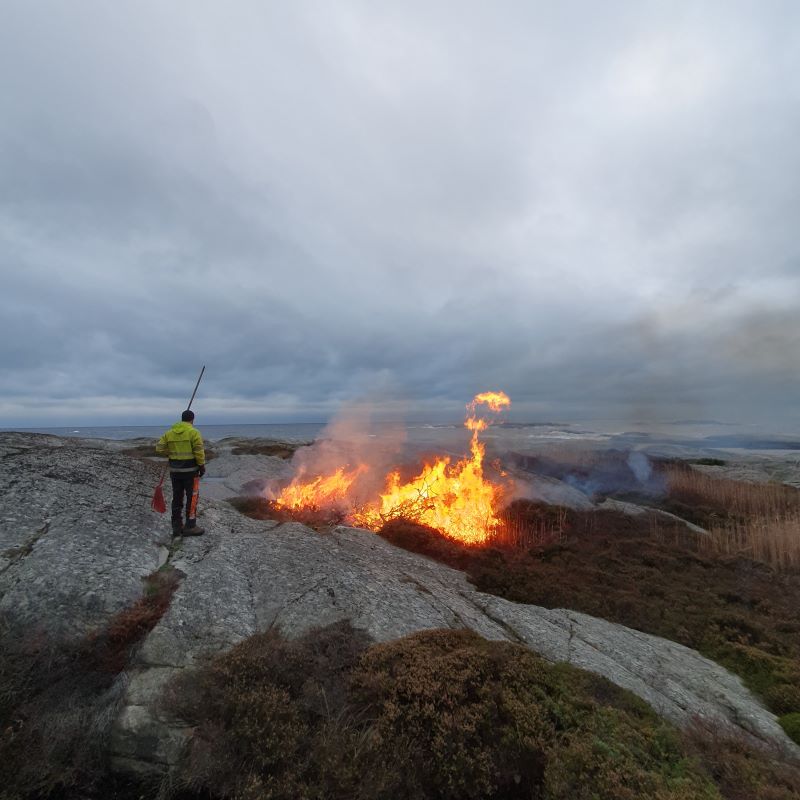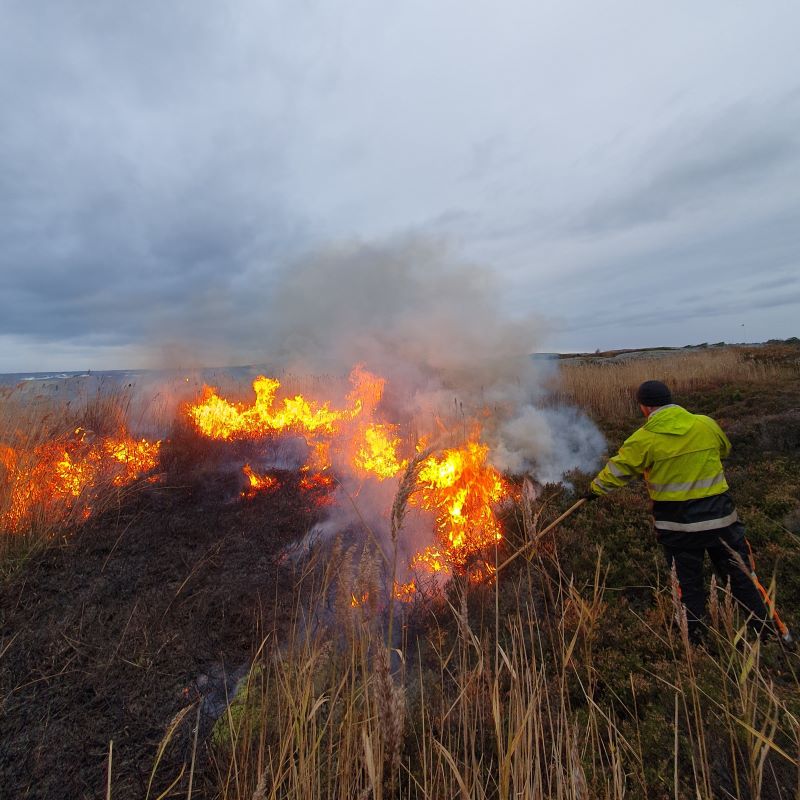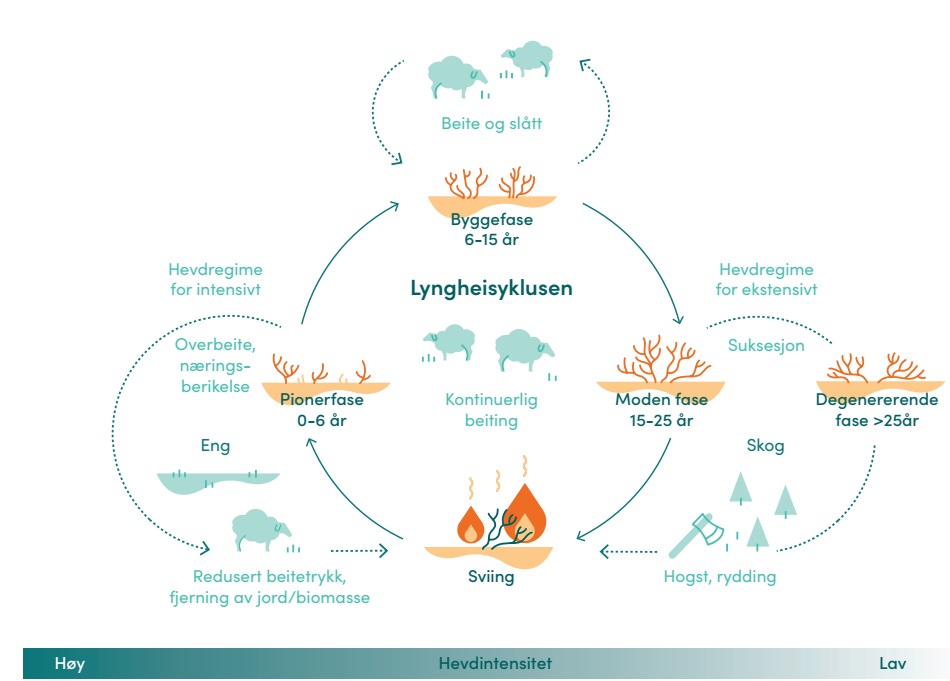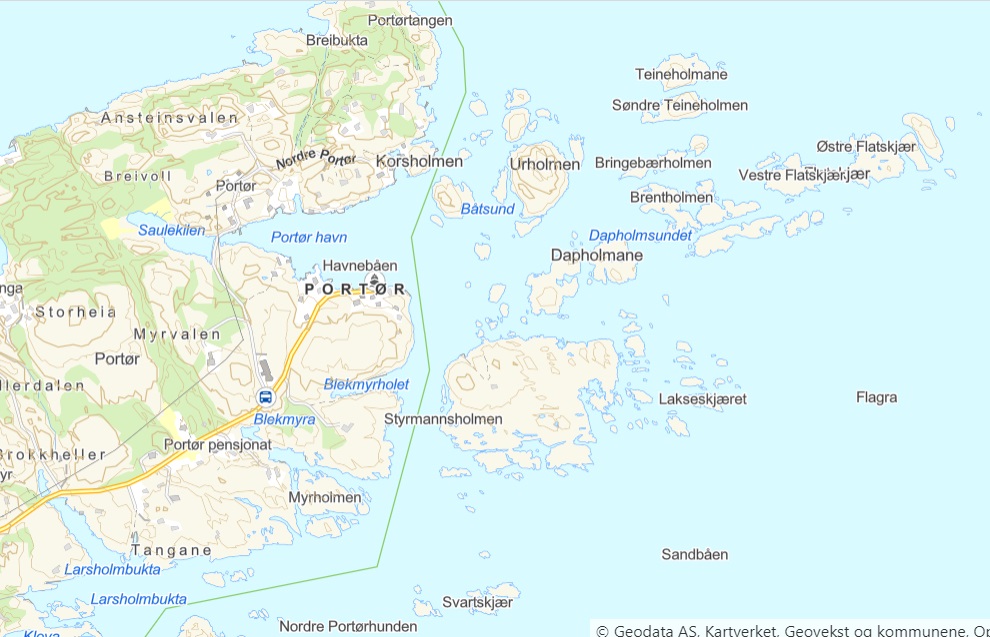In the spring of 2022, the Jomfruland National Park Board was presented with a management plan for the coastal heaths on Styrmannsholmen and Larsholmen. In the winter of 2023, the National Park Board started restoring the coastal heath on Styrmannsholmen.
Coastal heathland is one of Norway's oldest cultural landscapes, but is today threatened by increased overgrowth. The management method probably started over 5,000 years ago, and over the years it has developed into a habitat type with a rich biodiversity. Today, overgrowth is the biggest threat to our coastal heaths.
In Jomfruland National Park, Styrmannsholmen and Larsholmen outside Portør are mapped as coastal heathland. Based on oral histories and available photo documentation, the islets were grazed until the mid-1900s. With the disappearance of grazing animals and management, the islands probably began to regrow in the 1950s and 1960s.
In May 2022, the Jomfruland National Park Board received a separate management plan for the heather moors on Styrmannsholmen and Larsholmen. You can read the management plan by following the link Management plan for Styrmannsholmen and Larsholmen.
The management plan provides recommendations for restoration, grazing pressure and future management.
Work on the restoration of coastal heathland at Styrmannsholmen
In the winter of 2023, the national park board started restoration work on Styrmannsholmen. Extensive clearing was carried out of trees that had taken root over the past 50 to 60 years. Over the years, spruce, pine, birch and aspen have gradually taken over the island, and today there are signs of further spread and re-establishment of pine and other species. The logging waste was collected in piles that dried over the summer. In October and December 2023, the dry log piles were burned on site. Attempts were also made to burn the heather moor during this round, but the vegetation proved too damp for the fire to take hold. A small area of heather moorland was burnt to the north-west, as well as a section of reeds in the center of the islet.
As a result of the ongoing work, today you will encounter scorched areas where the brushwood piles have been burned, as well as areas where the burning of heather moorland has been tested. Unfortunately, in a couple of places the rock has been damaged by the heat, but this is a consideration that the management authority has taken into account when planning the restoration work.
The burnt areas and traces of large fires on Styrmannsholmen are therefore not the result of illegal wildfires or private twig burning, but part of a long-term plan and management to re-establish coastal heathland on Styrmannsholmen. In two to three years, we can experience new, vital heather and open heathland on Styrmannsholmen.
Further work
In the fall of 2024 or winter of 2025, the national park board will carry out sweeping of the remaining areas on Styrmannsholmen. In the summer of 2025, the area will be allowed to rest before livestock are released for grazing in 2026. The grazing area is planned to be digitally fenced in using GPS-controlled fences. Visitors to the islet in the summers of 2024 and 2025 will therefore encounter a fire-affected landscape.
Based on the experience gained from clearing, sweeping and evaluating grazing, it will be considered in a number of years whether similar work should be initiated at Larsholmen.
Read more!
You can read more about coastal heathland as a habitat type, threats and management methods by following the link to Kystlynghei (miljodirektoratet.no).
The figure to the right showing the cycle for heather moorland is taken from the brochure "Lyngsviing" published by the Norwegian Environment Agency. The brochure can be downloaded by following the link Brochure on heather weeding




